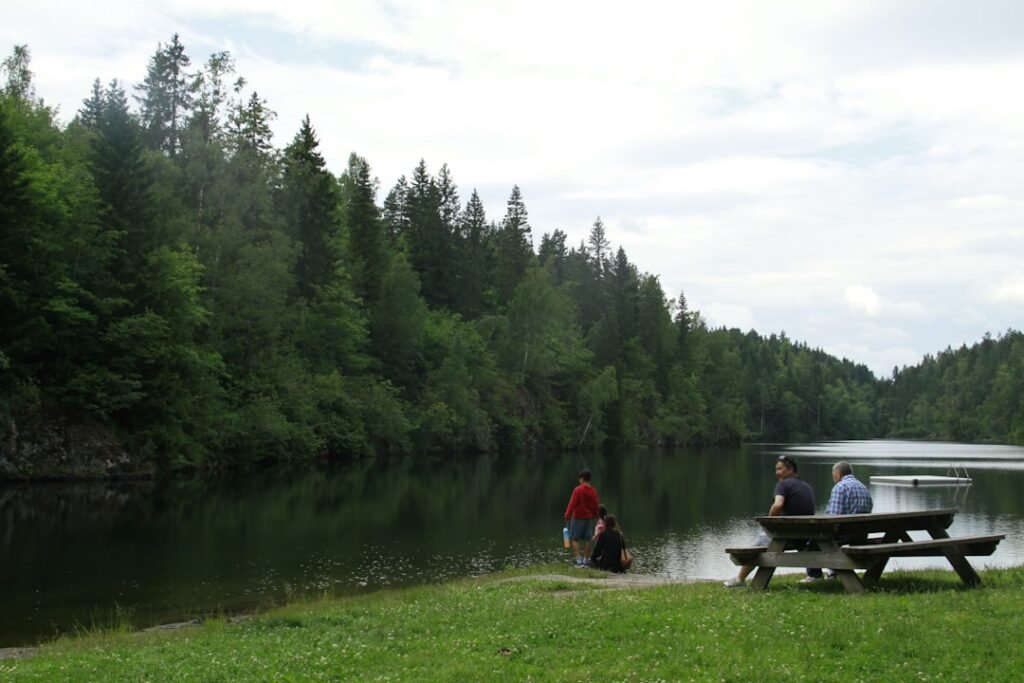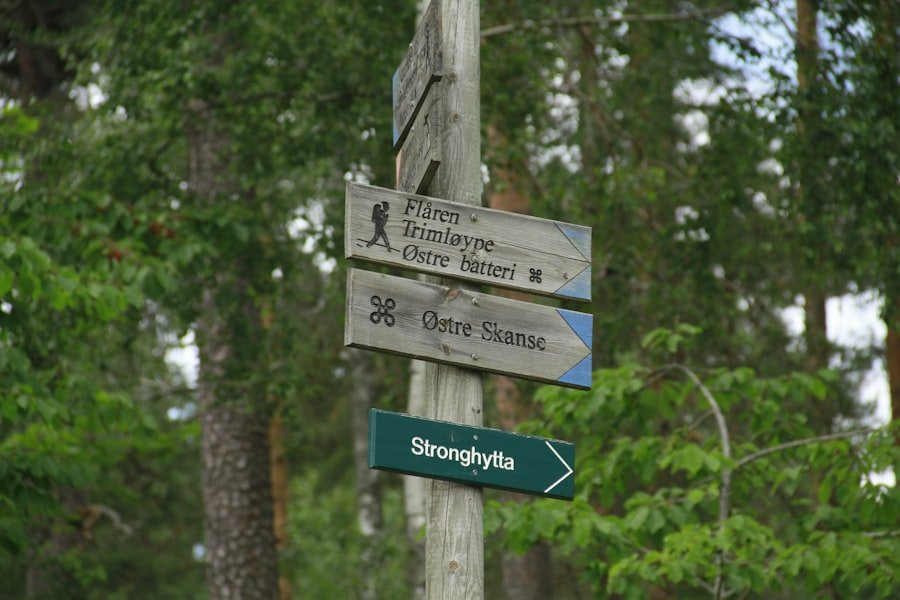

How to Agree and Disagree Politely in Norwegian
Politeness is a cornerstone of social interaction in any culture, and Norway is no exception. The Norwegian approach to politeness is often characterised by a blend of directness and subtlety, which can be both refreshing and perplexing for those unfamiliar with it. Understanding the nuances of polite communication in Norway is essential for anyone looking to engage meaningfully with Norwegians, whether in casual conversations or more formal settings.
This article aims to explore the various facets of politeness in Norwegian culture, providing insights into how to navigate social interactions with grace and respect. In Norway, politeness is not merely about using the right words; it encompasses a broader understanding of social dynamics and cultural expectations. The Norwegian ethos values equality and humility, which often translates into a communication style that is straightforward yet considerate.
This article will delve into the intricacies of polite expressions, body language, and the cultural context that shapes how Norwegians communicate. By mastering these elements, one can foster more meaningful connections and navigate the complexities of social interactions in Norway. The NLS Norwegian Language School offers comprehensive courses for all levels. Register today to get started.
Table of Contents
ToggleSummary
- Norwegian politeness is deeply rooted in the culture and plays a significant role in social interactions.
- Understanding the Norwegian culture of politeness involves being aware of the emphasis on equality, respect for personal space, and indirect communication.
- Polite phrases for agreeing in Norwegian include “Det er sant” (That’s true) and “Jeg er helt enig” (I completely agree).
- Polite phrases for disagreeing in Norwegian include “Jeg er ikke helt sikker på det” (I’m not entirely sure about that) and “Jeg ser det annerledes” (I see it differently).
- Using tone and body language is crucial in conveying politeness in Norwegian, as it can affect the overall perception of the conversation.
Understanding the Norwegian culture of politeness
Norwegian culture places a high premium on egalitarianism, which significantly influences its approach to politeness. Unlike some cultures where hierarchy dictates communication styles, Norwegians tend to favour a more level playing field. This means that even in formal situations, individuals are encouraged to speak openly and honestly, without excessive deference or formality.
However, this does not imply a lack of respect; rather, it reflects a belief that everyone’s opinion is valuable and should be heard. Moreover, the concept of “Janteloven,” or the Law of Jante, plays a crucial role in shaping Norwegian politeness. This unwritten social code discourages boasting or standing out too much, promoting humility and collective identity instead.
As a result, Norwegians often express politeness through understated communication, avoiding overt flattery or excessive praise. Understanding this cultural backdrop is essential for anyone wishing to engage with Norwegians effectively, as it informs not only what is said but also how it is received.
Polite phrases for agreeing in Norwegian

When it comes to expressing agreement in Norwegian, there are several phrases that can be employed to convey affirmation while maintaining politeness. One common expression is “Jeg er enig,” which translates to “I agree.” This straightforward phrase is often used in both casual and formal discussions. However, to enhance the politeness of your agreement, you might consider adding a qualifier such as “Jeg er helt enig,” meaning “I completely agree.” This not only reinforces your position but also shows respect for the other person’s viewpoint.
Another useful phrase is “Det er et godt poeng,” which translates to “That’s a good point.” This expression acknowledges the validity of the other person’s argument while simultaneously aligning yourself with their perspective. Such phrases are particularly effective in fostering a collaborative atmosphere during discussions, as they demonstrate that you value the contributions of others while also expressing your own agreement.
Polite phrases for disagreeing in Norwegian
Disagreeing politely can be a delicate matter, especially in a culture that values harmony and consensus like Norway. One effective way to express disagreement is by using phrases that soften your stance. For instance, “Jeg ser hva du mener, men…” translates to “I see what you mean, but…” This approach acknowledges the other person’s perspective before introducing your differing opinion, which can help mitigate any potential tension.
Another phrase that can be useful is “Det er en interessant tanke, men jeg tror…” meaning “That’s an interesting thought, but I think…” This not only shows respect for the other person’s ideas but also invites further dialogue rather than shutting down the conversation. By employing such phrases, you can navigate disagreements with tact and maintain a respectful tone throughout your discussions.
Using tone and body language to convey politeness
In addition to verbal expressions, tone and body language play a significant role in conveying politeness in Norwegian conversations. A calm and measured tone is often preferred, as it reflects thoughtfulness and consideration. Speaking too loudly or aggressively can be perceived as rude or confrontational, so it’s essential to modulate your voice appropriately based on the context of the discussion.
Body language also contributes significantly to how politeness is interpreted. Maintaining eye contact demonstrates engagement and respect for the speaker, while open gestures can convey receptiveness to their ideas. Conversely, crossing your arms or avoiding eye contact may signal disinterest or defensiveness.
Being mindful of these non-verbal cues can enhance your ability to communicate politely and effectively within Norwegian social contexts.
Navigating sensitive topics with politeness in Norwegian

Certain topics can be particularly sensitive in Norwegian culture, such as politics or personal finances. When approaching these subjects, it’s crucial to exercise caution and tact. A good strategy is to preface your comments with phrases like “Jeg håper det er greit å spørre,” meaning “I hope it’s okay to ask.” This shows that you are aware of the potential sensitivity surrounding the topic and are willing to tread carefully.
Additionally, when discussing sensitive issues, it’s beneficial to frame your opinions as personal perspectives rather than absolute truths. For example, saying “Jeg føler at…” translates to “I feel that…” allows you to express your viewpoint while acknowledging that others may have different opinions. This approach fosters an atmosphere of mutual respect and understanding, making it easier to navigate potentially contentious discussions.
How to express agreement and disagreement in a group setting
In group settings, expressing agreement or disagreement requires an additional layer of consideration due to the dynamics at play. When agreeing with someone in a group, it’s helpful to reference their points directly before adding your own thoughts. For instance, you might say, “Som [name] nevnte,” meaning “As [name] mentioned,” followed by your agreement.
This not only validates the original speaker but also reinforces group cohesion. Conversely, when disagreeing in a group context, it’s essential to be diplomatic. Phrasing your disagreement as a question can be an effective strategy: “Har vi vurdert…?” translates to “Have we considered…?” This invites others to reflect on alternative viewpoints without directly challenging anyone’s opinion.
By employing such techniques, you can contribute constructively to group discussions while maintaining a polite atmosphere.
Polite ways to handle conflict in Norwegian conversations
Conflict resolution in Norwegian conversations often hinges on maintaining respect and understanding throughout the process. When faced with disagreement or conflict, it’s vital to approach the situation with an open mind and a willingness to listen. Phrases like “La oss finne en løsning sammen,” meaning “Let’s find a solution together,” emphasise collaboration rather than confrontation.
Additionally, acknowledging the other person’s feelings can go a long way in diffusing tension. Saying something like “Jeg forstår at dette er viktig for deg,” which translates to “I understand that this is important to you,” validates their emotions and demonstrates empathy. By prioritising understanding and cooperation over winning an argument, you can navigate conflicts more effectively while preserving relationships.
Practicing active listening and empathy in Norwegian discussions
Active listening is an essential component of polite communication in Norway. It involves not only hearing what others say but also demonstrating that you are engaged and interested in their perspectives. Simple gestures such as nodding or using affirming phrases like “Ja” or “Mhm” can signal that you are paying attention and valuing their input.
Empathy plays a crucial role alongside active listening. When someone shares their thoughts or feelings, responding with empathy can strengthen connections and foster trust. Phrases like “Det må ha vært vanskelig for deg,” meaning “That must have been difficult for you,” show that you are attuned to their emotions and willing to support them through their experiences.
By practising these skills, you can enhance your ability to communicate politely and effectively within Norwegian contexts.
Using humour and diplomacy to express agreement and disagreement
Humour can be a powerful tool in navigating conversations about agreement and disagreement in Norway. A well-timed joke or light-hearted comment can diffuse tension and create a more relaxed atmosphere for discussion. However, it’s essential to ensure that your humour is appropriate for the context and does not offend anyone involved.
Diplomacy also plays a vital role when using humour in conversations. For instance, if you disagree with someone’s point but want to keep things light-hearted, you might say something like “Det er en interessant vinkel – men jeg tror jeg har en annen!” which translates to “That’s an interesting angle – but I think I have another!” This approach maintains respect while allowing for differing opinions without escalating conflict.
Mastering the art of polite communication in Norwegian
Mastering polite communication in Norwegian requires an understanding of cultural nuances and an appreciation for the values that underpin social interactions in Norway. By familiarising yourself with polite phrases for agreeing and disagreeing, utilising appropriate tone and body language, and practising active listening and empathy, you can navigate conversations with confidence and grace. For those looking to deepen their understanding of the Norwegian language and culture further, enrolling in courses at the NLS Norwegian Language School in Oslo can be an invaluable step.
The school offers comprehensive programmes designed not only to teach language skills but also to immerse students in the cultural context that shapes communication styles in Norway. By engaging with experienced instructors and fellow learners at NLS, you will gain practical insights into mastering the art of polite communication in Norwegian—an essential skill for building meaningful relationships within this unique cultural landscape.
Start your Norwegian language journey with Oslo’s leading school.
If you want to learn Norwegian, you can register for classes here. We look forward to hearing from you and helping you become fluent in Norwegian.





